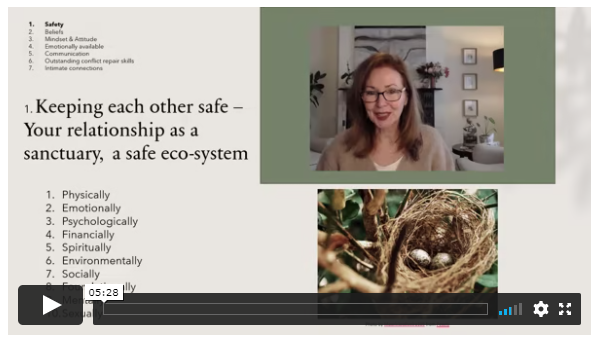LIFT = Loving, Intimate, Fair and Trustworthy - Essential ingredients for relationships to LIFT.
Remember to join our private Facebook group.
Want more? Find an extension exercise below.
DAY 4: How emotionally available are you?
Over to you: Today’s Exercise
In your journal, reflect on times where you’ve been emotionally available - what was different about you that resulted in an open & emotionally present conversation.
Now reflect on the opposite: think of a time when you weren’t emotionally present (ie more in your head thinking about other things like making dinner, checking on the children, worrying about paying a bill, what’s going on at work?). How did the conversation go? What could you do differently next time so you are more present?
Find time to talk with your partner about how well both of your emotional needs are met.
Create an agreement with each other around how you’ll turn up more emotionally present when discussing feelings & challenges that may trigger uncomfortable emotions.
If you’re looking for a quick review of what we’ve covered so far, click any of the images below.
Extension exercise: How to be more emotionally available
For example: If you struggle to be emotionally available because you’re ‘in your head’ and your mind seems easily distracted, use these tips to practice having a discussion about an issue that’s concerning your partner. If uncomfortable emotions come up, your goal is to stay with them.
If your partner is wanting (or has wanted) to talk about something you’ve been putting off, begin by creating a specific time when you won’t be distracted. Let your partner know when this will be and why you feel it’s important to set a specific time so you’ll ‘be present’ (ie able to listen without worrying about a deadline or being distracted).
Before you begin, turn off all electronic media or be in a room away from them (e.g. phone, computer, TV and any other distractions). If you know that listening & remembering to what someone says isn’t your strong point, then have a pen & paper ready to take notes - let your partner know you’re aiming to improve your listening & this will help.)
Turn your body towards your partner (you can be sitting side-by-side as long as you’re facing each other), relax your shoulders/neck/back, take 4 slow breaths, feel your feet touching the ground (it can help you feel more grounded), mirror your partner’s posture (this can send a positive message that you’re on the same page), make eye contact (avoid glaring/staring). Avoid fidgeting with pens, paper, paperclips or jiggling your legs. If you’re sitting near each other, place your hand on their leg (first, ask permission if this is ok to do).
Begin by saying: “What would you like to talk about?”
Aim to listen with your whole body (i.e. observe what your partner is experiencing & listen by focusing). Listen for key words (they’re often said with more emphasis or repeated), watch for emotion that may arise (change in facial colour, muscle tone, hand-to-face gestures, body movements, eye movements). Keep your face soft and responsive. Imagine feeling what they’re feeling.
If you feel your body reacting in an uncomfortable way to what is being said, ask for a pause in the conversation by saying, “I’m feeling a bit emotional at the moment, do you mind if we pause for a moment”. Then breathe in slowly for 4 counts, hold the breath for 4 counts, breath out slowly for 4 counts, hold the out-breath for 4 counts. Get a glass of water as this will help you loosen your body (walking to get the water) - continue breathing.
When calm, repeat back to your partner what they just said - as closely as you can. (You don’t have to agree with it, simply repeat it back as you heard it.) This is important as it helps your partner know they are being heard - use their language (key words you’ve noted). Ask if you’ve got it right, or if there’s anything they’d like to add.
Throughout the conversation, aim to monitor your emotions. Name them up to your partner if you’re feeling anxious, angry, fearful etc. Aim to stay with the emotion, think of riding it like a wave. Emotions roll like waves - visualise this if it helps. Breathe through the emotion and notice where in your body you’re experiencing it. Be curious about it, rather than trying to stop the emotion or distract yourself.
Tomorrow, we’ll take this exercise to the next stage.
Up next … Day 5: How To Manage Conflict
“What you focus on ... you’ll attract more of”





